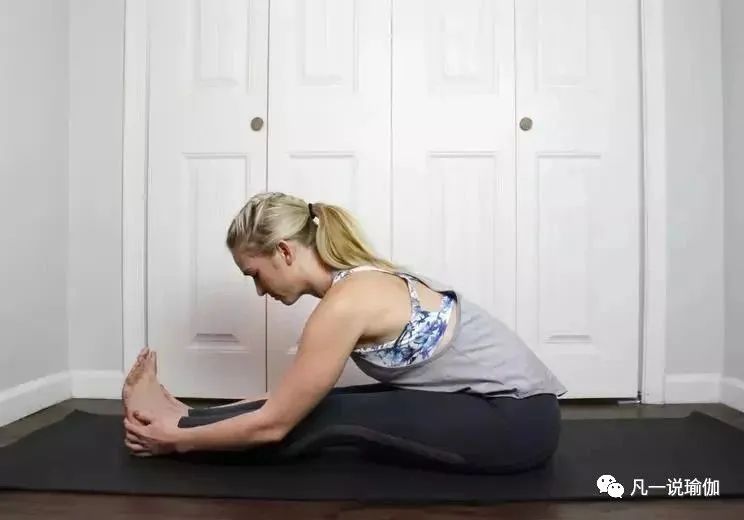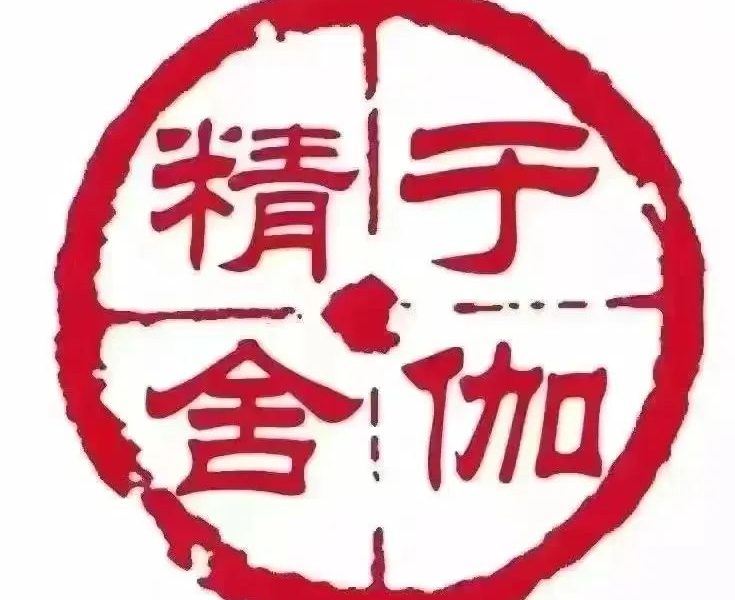When reading the comments in the comment area these days, I saw several people mention the same problem: in the Yoga warrior, the heel of the back foot can’t fall to the ground.

If you step on the ground forcibly, the pelvis will not be placed correctly and the body can’t be stable.

What’s the matter? Let’s have a look.

Part I: know the soldiers first.

The figure below belongs to the basic standing posture.

The practice steps are not complex, and can be completed with one breath.

It mainly exercises leg strength, core strength, leg flexibility and hip flexibility.

Take a look at the practice method: stand in the middle of the mat in mountain style, with both feet the same width as the pelvis, knees and toes facing directly in front, hold the hips with both hands, withdraw the left foot and step back on the ground with the sole of the foot.

Inhale, raise your hands above your head, exhale relative to your palms, bend your left knee, and pad your right lower leg vertically into the warrior.

Keep breathing for 5 to 8 groups and Practice on the opposite side.

A standard warrior should step on the heel of one leg completely, but why can’t you? Before I talk about this issue, I’ll introduce two different versions of soldiers and their respective characteristics.

1.

For the version with long feet distance, in order to facilitate the following article to describe what we call the long version of War I, the following features: long feet distance; Low center of gravity; The right leg needs to be extended greatly, especially in the front of the thigh, the inside and the back of the lower leg; The range of extension and internal rotation of the right hip is large; You need to activate your legs and your core.

2.

For the version with short distance between feet, let’s give it a short version for the time being.

The following features: short distance between feet; High center of gravity; The extension range of hind legs is small; The extension and internal rotation range of posterior hip is small; You need to activate your legs and your core.
From the two versions of War I, we can see that they have in common: they both need to start the strength of the core and legs, and their differences are: the flexibility of the hind legs and the extension and internal rotation of the hip joint are different.
Part II: find out the reason why your feet can’t step on the ground.
Now let’s have a look.
Why can’t your back foot step on the ground? We say that there are two common reasons why you can’t do it well: one is lack of muscle strength; One is the lack of muscle flexibility and joint flexibility.
There may be a problem with one aspect or both.
There are only two reasons why soldiers can’t step on the ground with their heels.
How to judge what causes them? How to solve it? Let’s look down.
1.
Judge power in short version War 1.
Because the flexibility of the hip and the flexibility of the legs in the short version of War I are almost negligible.
If you can step on the ground with your heels, but your body is unstable and can’t maintain it for a long time, it’s a sign of your lack of strength; On the contrary, if your body is stable and can maintain it for a long time, it means that you have no problem with your strength.
2.
Judge the flexibility of the hind legs and the extension and internal rotation ability of the rear hip in the long version War I.
the long board and the first heel cannot step on the ground, but when you stand on tiptoe, you can keep your body stable, which shows that the strength of your legs is OK.
The short board is that the flexibility of the thigh and the flexibility of the hip joint are not enough; On the contrary, when tiptoe heel, the body can not be stable, indicating that the strength flexibility and hip joint flexibility are not enough.
3.
Judging by the pelvis.
In the long version of War 1, if you step on the ground with your heel, your hip can’t be straightened, it must be that the flexibility of your hip joint is not enough.
Especially the ability of internal rotation of hip joint.
To tell you the truth, this hip turns a little hard.
It’s better to lift the back heel.
The figure below shows that when the foot steps on the ground, the hip joint is not extended and rotated enough, so there is no way to keep the hip in the positive position.
With the heel stepping down, the rear hip will also be pulled back, resulting in one hip leaning forward and one hip leaning backward, and the pelvis cannot remain stable.
Part III: solutions finding out the reasons is the first step, and then we solve the problems according to our own reasons.
1.
Insufficient strength.
Just do the first battle of the short board and exercise your strength in the first battle of the short board.
2.
Strength is enough, but the flexibility of the legs is insufficient, and the flexibility of the hip joint is not enough.
Make a long version of the war, and stand on tiptoe at the back of the heel.
3.
Strength and flexibility are not enough.
Do it on tiptoe heel.
The distance between the feet is longer than the short version and shorter than the long version.
Adjust the distance between the feet according to your own situation.
In short, on the premise that the strength can ensure the stability of the body, let the hind legs of the lateral hip joint feel stretched.
Remember: correct pelvis and stable body are the basis.
On this basis, adjust the distance between your feet to find the feeling of extension.
When the distance is large enough and you can still maintain stability, slowly land your heels down and practice step by step.
With strength, hip joint extension ability and leg toughness, You can do a long version of the heel on the ground.
In addition to step-by-step practice and strengthening in World War I, you can also exercise the strength and flexibility of your legs and hip extension in other postures.
Let’s introduce some actions.
The first group of leg strength: 1.
Stand on the cushion in goddess style, keep your feet one leg apart, turn the soles of your feet outward, and hold your hips with both hands.
Inhale, extend your spine, exhale, roll your tailbone, bend your knees and squat to your own range.
Keep the goddess pose for 5 to 8 groups.
After breathing, restore the force of the goddess pose and War I hind legs, especially like the front and inner sides of the legs.
2.
In terms of artistic conception, Warrior II of War II is also prepared for War I.
standing on the mat, the feet are greatly separated, the right foot is rotated outward by 90 degrees, the left foot is slightly buckled in, inhales, the body side of both hands, stretches the palm and exhales downward, bends the right knee and the right calf, and looks at the direction of the right hand vertically.
Keep breathing for 3 to 5 groups in the second pose of battle pose, and then practice on the positive and negative sides.
The second group is leg flexibility and hip joint extension ability.
1.
The ability of crescent hip joint extension and internal rotation.
The lunge at the front of the thigh is ready to bend the left knee and the left lower leg, with the knee toes facing straight ahead..


